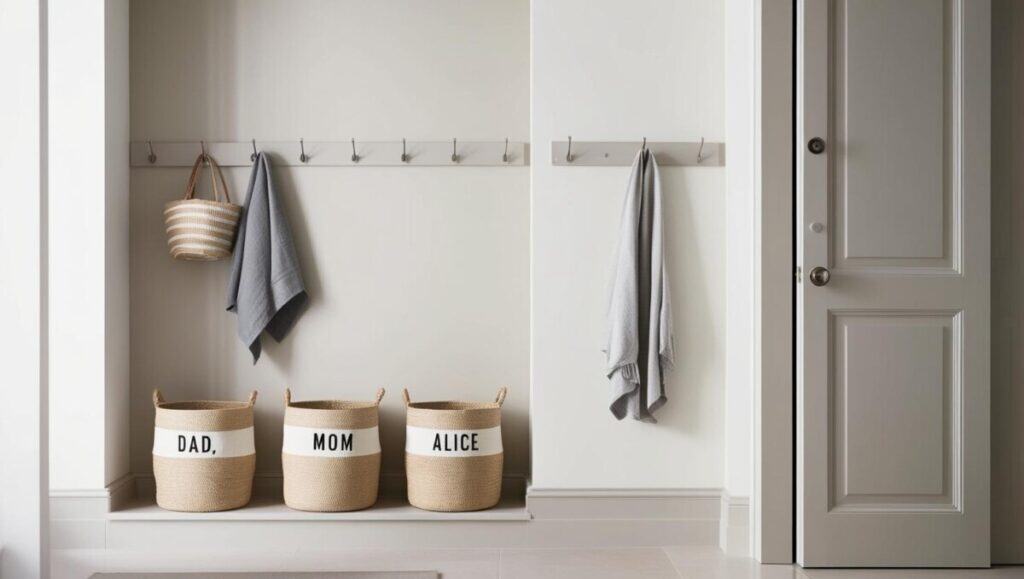If your house sometimes feels like a whirlwind of laundry piles, half-eaten snacks, and unanswered group chats about school events, you’re not alone. Daily home management isn’t about perfection—it’s about flow. Let’s talk about a few smart, sanity-saving strategies to keep things running smoothly and reclaim that sense of calm at home.
Daily home management can seem overwhelming, but it doesn’t have to be. By implementing a few simple strategies, you can create a more organized and efficient home environment. Let’s delve deeper into each of the strategies mentioned, exploring additional tips and examples that can help you manage your home effortlessly.

Daily Home Management Strategies
1. Start the Day with a 15-Minute Reset
For instance, if a family member is tasked with making their bed, encourage them to add a personal touch, like arranging their pillows in a way that makes the room feel cozier. This not only makes the room look tidy but also instills a sense of ownership in the individual.
Set a timer and give everyone in the family a quick morning task: make the bed, unload the dishwasher, put away clutter. These tiny tasks reset your space and mindset before the day begins.
Consider keeping a small notepad in the kitchen for jotting down tasks that come to mind throughout the day. This will help you remember to tackle them immediately and maintain a clean space.
2. Use the “Two-Minute Rule”
When batching chores, you could designate specific days for laundry and meal prep, such as Wednesdays and Sundays. This allows you to have dedicated times where you can focus entirely on these tasks without the distraction of other daily responsibilities.
If a task takes less than two minutes—like wiping down the counter or replying to that class WhatsApp message—do it immediately. It’s a small shift that prevents pileups later.
Consider incorporating themed dinner nights, like Taco Tuesdays or Pasta Fridays. This adds an element of fun and anticipation to meal planning, making it easier for everyone to know what to expect and reducing the stress of decision-making.
3. Batch Your Chores
This drop zone can be enhanced with labeled bins or baskets for each family member, making it even easier to find items when you leave or return home. For instance, have a basket for sports equipment if your kids are involved in activities.
Instead of sprinkling chores throughout the day, group similar tasks together. Do laundry on two specific days, meal prep twice a week, and check your calendar only once in the evening. This saves mental energy and keeps your day focused.
When delegating tasks, create a chore chart that rotates responsibilities weekly. This way, everyone gets a turn at different chores, which can help to keep things fair and engaging.
4. Simplify the Meal Routine
As part of your evening routine, consider incorporating family discussions about the day. This not only provides a chance to connect with one another but also allows everyone to express their feelings and unwind together.
Rotate 10 go-to dinners your family loves. Write them on a whiteboard or sticky notes on the fridge. This creates a visual menu and cuts down on the daily dinner debate.
This command center can include a section for meal planning, allowing everyone to contribute ideas for dinners and ensuring you have everything you need for the week. You might also consider utilizing digital calendars that everyone can access on their devices.
5. Create a Drop Zone
Consider hosting a family meeting once a month to discuss household organization. This can be a fun way to reflect on what worked and what didn’t, encouraging everyone to be part of the process.
Set up a designated space near the entrance for bags, shoes, keys, and school notes. It reduces the pre-school scramble and makes coming home feel organized, not chaotic.
Make it a tradition to celebrate these wins at the end of each week, setting aside time to acknowledge everyone’s contributions. This fosters a positive environment where every family member feels valued.
6. Delegate Like a Boss
You don’t have to do it all. Assign age-appropriate tasks to the kids (yes, even the toddler can help sort socks) and get your partner involved in a fair and consistent way.
7. Evening Wind-Down Routine
Take 10-15 minutes after dinner to reset shared spaces. Light a candle, dim the lights, do a quick tidy-up, and cue up a relaxing playlist. It transitions your home from day-mode to chill-mode.
8. Keep a Family Command Center
A corkboard or wall planner with everyone’s schedules, reminders, and important papers can prevent miscommunication and last-minute stress.
9. Embrace Imperfection
Remember: A lived-in home is a happy one. Aim for ease, not Instagram. Some days will be messier than others, and that’s okay.
10. Celebrate Small Wins
Did everyone get out the door on time? Was dinner a team effort? High five. Noticing and celebrating tiny victories fuels motivation to keep going.
Final Thought: Home management is not just about keeping things tidy; it’s about nurturing a space where everyone feels comfortable and valued. By integrating these strategies into your daily routine, you can create a harmonious environment that reflects your family’s unique rhythm. Remember, it’s all about finding a balance that works for you!
Find similar tips by clicking tips internal link.
FAQs: Daily Home Management
Q1. What is daily home management, and why is it important?
Daily home management refers to the routine tasks and systems that keep a household running smoothly—like cleaning, organizing, meal planning, and coordinating schedules. It helps reduce stress, save time, and maintain a sense of calm and order in your home.
Q2. How can I start daily home management if I’m overwhelmed?
Start small. Choose one or two tasks—like a 15-minute morning reset or a drop zone by the door. Once those feel natural, add more. Small, consistent actions create lasting results.
Q3. What tools help with daily home management?
A wall calendar, to-do list app, meal planner, and a family command center are great tools. The key is consistency, not complexity.
Q4. How do I get my family involved in daily home management?
Make it a team effort. Assign age-appropriate chores, create routines everyone understands, and celebrate small wins together. When everyone shares the load, it becomes more manageable—and more fun.
Q5. Is it okay if I can’t follow the routine every day?
Absolutely. Daily home management is a guide, not a rulebook. Some days will be messy, and that’s normal. Focus on progress, not perfection.


